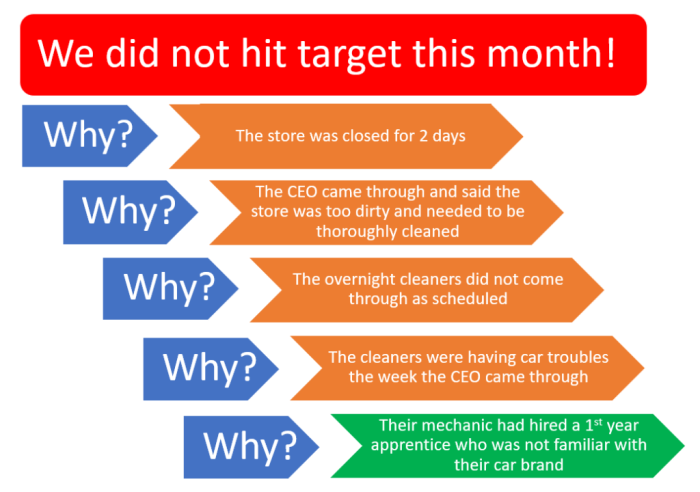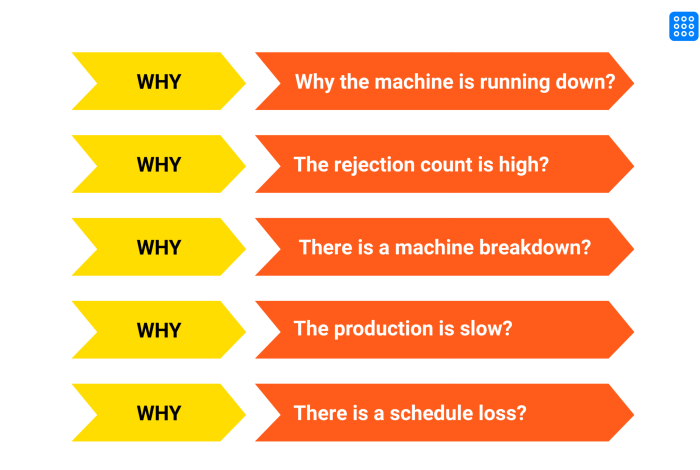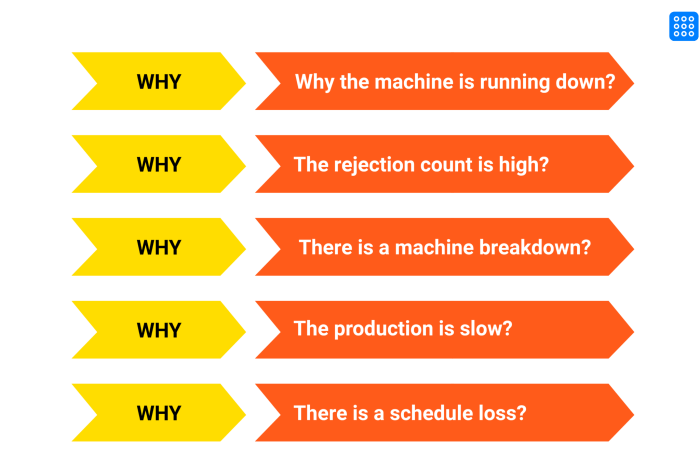Why some people are more ambitious than others is a fascinating question, prompting exploration of various factors that shape individual drive. From environmental influences to personal attributes and goal-setting strategies, this post delves into the complex interplay of elements that fuel ambition. We’ll examine the role of socioeconomic backgrounds, cultural norms, and parental influence, alongside personality traits, self-efficacy, and intrinsic motivations.
Understanding these multifaceted elements can help us better understand and potentially cultivate our own ambition.
This exploration touches on how clear goal setting, effective time management, and strategies for overcoming obstacles play a vital role. We’ll also discuss the importance of resilience, learning from failures, and seeking support during challenging times. Ultimately, we aim to understand the path towards developing and maintaining ambition, acknowledging the importance of continuous learning, personal growth, and leveraging opportunities for advancement.
Factors Influencing Ambition
Ambition, a driving force behind personal and societal progress, is not a monolithic trait. Its manifestation and intensity are shaped by a complex interplay of environmental, familial, and educational factors. Understanding these influences is crucial to fostering a supportive environment for individuals to develop and pursue their aspirations.Socioeconomic backgrounds play a significant role in shaping ambition levels. Children from affluent backgrounds often have greater access to resources, opportunities, and support systems that can foster ambition.
Exposure to advanced education, extracurricular activities, and mentorship programs can create a foundation for higher aspirations. Conversely, individuals from disadvantaged backgrounds may face barriers such as limited access to quality education, financial constraints, and societal biases, potentially hindering the development of ambitious goals. These disparities often reflect broader societal inequalities and underscore the importance of addressing systemic issues to promote equitable opportunities for all.
Environmental Factors Shaping Ambition
Environmental factors profoundly impact the development of ambition. Exposure to role models, both within and outside the family, can significantly influence an individual’s aspirations. Observing successful individuals in various fields, from academics to entrepreneurs, can ignite a desire for similar achievements. Furthermore, the prevailing cultural norms and societal expectations play a crucial role. In some cultures, ambition is highly valued and actively encouraged, while in others, it may be perceived as disruptive or excessive.
Socioeconomic Backgrounds and Ambition Development
The socioeconomic landscape significantly impacts an individual’s capacity to pursue ambitious goals. Access to resources, such as quality education, mentorship, and financial stability, is often disproportionately distributed across socioeconomic strata. Children from affluent backgrounds frequently encounter stimulating environments and supportive networks that foster their ambitions. In contrast, individuals from disadvantaged backgrounds may face barriers like limited access to educational opportunities, financial constraints, and social stigma, potentially limiting the scope of their ambitions.
Cultural Norms and Societal Expectations
Cultural norms and societal expectations exert a powerful influence on ambition levels. Some cultures strongly encourage ambition and innovation, emphasizing personal achievement and upward mobility. These cultures often celebrate entrepreneurship, leadership, and the pursuit of excellence. In contrast, other cultures may prioritize collective well-being and harmony, potentially downplaying individual ambition in favor of group cohesion. This disparity in cultural values directly impacts the expression and pursuit of individual ambitions.
Parental Influence and Family Dynamics
Parental influence and family dynamics play a pivotal role in shaping ambition. Supportive and encouraging parents often instill a sense of self-efficacy and belief in their children’s capabilities. Positive reinforcement and open communication about aspirations create a nurturing environment for ambition to flourish. Conversely, families characterized by criticism, discouragement, or conflicting values may hinder the development of ambitious goals.
Healthy family dynamics provide the emotional foundation for individuals to pursue their aspirations confidently.
Sometimes, it feels like some folks just have that extra drive, that unwavering ambition. But what if the key isn’t some inherent quality, but rather a lack of certain roadblocks? Maybe, if you’re struggling to find that fire, you need to examine why meditation hasn’t been working for you. Perhaps you’re not approaching it with the right mindset or struggling with why meditation has failed you.
Ultimately, the answer to unlocking that ambition might lie less in innate differences and more in understanding what’s holding you back. Perhaps there’s a deeper reason you’re not as ambitious as you want to be.
Educational Experiences and Opportunities
Educational experiences and opportunities play a crucial role in nurturing ambition. Exposure to challenging curricula, stimulating environments, and diverse perspectives broadens horizons and inspires a desire for continuous learning. Quality education equips individuals with the knowledge, skills, and confidence necessary to pursue ambitious goals. Conversely, limited educational opportunities or inadequate support systems can hinder the development of ambition.
Cultural Contexts and Ambition Expectations
| Cultural Context | Societal Expectations Regarding Ambition | Examples | Further Considerations |
|---|---|---|---|
| Individualistic Cultures (e.g., United States) | Emphasis on individual achievement, self-reliance, and upward mobility. | Pursuit of personal success, entrepreneurship, and career advancement. | Potential for competition and stress. |
| Collectivist Cultures (e.g., Japan) | Emphasis on group harmony, cooperation, and social responsibility. | Emphasis on community and family needs over individual ambitions. | Potential for suppressed individual desires. |
| Traditional Cultures (e.g., some rural communities) | Ambition may be tied to traditional roles and family expectations. | Strong emphasis on family obligations and societal norms. | Limited opportunities for diverging from established pathways. |
| Emerging Economies (e.g., India) | Balancing traditional values with aspirations for economic advancement. | Combination of cultural norms and desire for financial improvement. | Often involves navigating complex social structures. |
Factors Impacting Ambition
Understanding the factors influencing ambition requires a holistic perspective. The following factors can be categorized into environmental, familial, and educational domains.
- Environmental Factors: Exposure to role models, cultural norms, and societal expectations significantly influence ambition development.
- Familial Factors: Parental support, family dynamics, and values systems shape an individual’s belief in their capabilities and their aspirations.
- Educational Factors: Access to quality education, stimulating environments, and opportunities for personal growth are crucial for fostering ambition.
Personal Attributes and Motivations
The tapestry of ambition is woven from a complex interplay of personal attributes and motivations. Beyond external factors and societal pressures, inherent traits and internal drives significantly shape an individual’s level of ambition. Understanding these internal forces provides a deeper insight into the multifaceted nature of this human characteristic.A crucial element in understanding ambition lies in recognizing the role of personality traits and intrinsic motivations.
These internal factors, often intertwined with external influences, contribute to the diverse expressions of ambition we observe in individuals. This exploration delves into the specific attributes that frequently accompany high ambition, highlighting the critical role of self-belief and personal values in driving the pursuit of challenging goals.
Personality Traits Associated with High Ambition
Individuals driven by strong ambition often exhibit specific personality traits. These traits, while not exclusive indicators, frequently correlate with a desire for achievement and a proactive approach to life. These include a strong sense of purpose, resilience in the face of setbacks, a proactive attitude, and a tendency towards self-discipline. These qualities enable individuals to navigate challenges and persist in their pursuits.
The Role of Self-Efficacy
Self-efficacy, or the belief in one’s capabilities to organize and execute the courses of action required to produce given attainments, plays a pivotal role in driving ambition. Individuals with high self-efficacy are more likely to set challenging goals and persist in the face of obstacles. They are confident in their abilities to succeed, which fuels their determination and commitment to achieving their ambitions.
This belief in one’s capabilities forms a crucial foundation for sustained ambition.
Intrinsic Motivations
Intrinsic motivations are internal drives that energize and direct behavior, independent of external rewards. Examples of intrinsic motivations that fuel ambition include a deep passion for a particular field, a desire for personal growth, a sense of purpose, and a strong sense of accomplishment. These intrinsic rewards often outlast extrinsic motivators, making them crucial in the long-term pursuit of ambitious goals.
Connection Between Personal Values and Ambition
Personal values significantly influence the pursuit of ambitious goals. Individuals whose values align with their goals are more likely to be motivated and committed to achieving them. This alignment fosters a sense of purpose and meaning, providing the internal drive needed to overcome obstacles and persevere. The consistency between personal values and the desired outcomes is a powerful motivator.
Fear of Failure vs. Desire for Achievement
Fear of failure and the desire for achievement are two opposing forces that can influence ambition levels. While the desire for achievement motivates individuals to strive for excellence, fear of failure can act as a deterrent, limiting ambition and hindering progress. Understanding the interplay between these two forces is crucial for managing ambition effectively.
Strategies for Managing Fear of Failure
Strategies for managing the fear of failure include reframing negative thoughts, focusing on the learning process, setting realistic goals, seeking support from mentors and peers, and developing a growth mindset. These strategies can empower individuals to embrace challenges, overcome obstacles, and maintain their ambition despite the inherent risk of failure.
Table: Personality Types and Motivational Drivers
| Personality Type | Motivational Drivers | Example Behaviors | Potential Challenges |
|---|---|---|---|
| Perfectionist | High standards, desire for excellence, fear of mistakes | Sets extremely high goals, meticulously plans, revises work extensively | Can lead to procrastination, self-criticism, and avoidance of challenges |
| Independent | Autonomy, self-reliance, desire for control | Works independently, takes initiative, seeks out opportunities | May struggle with collaboration, may isolate themselves |
| Goal-oriented | Focus on achieving specific outcomes, tangible results | Creates detailed action plans, monitors progress, sets deadlines | May prioritize efficiency over well-being, may overlook unexpected obstacles |
| Growth-oriented | Continuous learning, personal development, seeking new experiences | Enjoys challenges, embraces feedback, constantly seeks opportunities for improvement | May be susceptible to overwhelm or overcommitting |
Ambition and Goal Setting
The journey of ambition isn’t just about having desires; it’s about turning those desires into tangible achievements. A crucial component of this journey is goal setting. Clear, well-defined goals provide a roadmap, motivating us to take consistent action and measure our progress. Effective goal setting isn’t just about creating a list; it’s about understanding the process, the methods, and the strategies to ensure those goals become realities.Setting goals isn’t a one-size-fits-all process; it’s a personalized approach.
This involves recognizing personal motivations, understanding individual strengths, and acknowledging limitations. However, regardless of individual differences, a robust goal-setting framework offers a structured approach to help navigate the complexities of achieving aspirations.
Significance of Clear Goal Setting
Clear goal setting is essential for fostering ambition. It provides a tangible focus, transforming abstract desires into actionable steps. Well-defined goals provide a sense of direction, helping individuals stay motivated and focused on the desired outcome. Without clear goals, ambition can become diffused, leading to a lack of direction and ultimately, frustration.
Methods for Establishing Meaningful and Attainable Goals
Effective goal setting begins with understanding what you truly want to achieve. Consider your values, aspirations, and personal motivations. Don’t just set goals; craft them in a way that resonates with your core beliefs. Break down large, complex goals into smaller, more manageable steps. This incremental approach makes the overall objective less daunting and provides regular opportunities for progress affirmation.
Breaking Down Large Goals into Smaller Steps
Breaking down large goals is a fundamental strategy for success. Instead of feeling overwhelmed by a monumental task, divide it into smaller, more manageable sub-goals. This approach allows for regular progress checkpoints, providing a sense of accomplishment and reinforcing motivation. For instance, a goal to write a book could be broken down into daily writing targets, research phases, and editing stages.
Effective Strategies for Prioritizing Tasks and Managing Time
Prioritization is key to effective goal management. Tools like the Eisenhower Matrix (urgent/important) can help categorize tasks and focus on high-impact activities. Time management techniques, such as the Pomodoro Technique (focused work intervals with short breaks), can enhance productivity and efficiency. Creating a schedule or to-do list can provide structure and visibility, allowing you to track progress and stay on course.
Evaluating Progress and Adjusting Strategies, Why some people are more ambitious than others
Regular evaluation of progress is critical for maintaining momentum. Track your accomplishments, analyze your setbacks, and identify areas where you need to adjust your approach. Be flexible and willing to adapt your strategies as circumstances evolve. Don’t be afraid to modify your goals or timelines if necessary to ensure alignment with your evolving priorities.
Goal-Setting Frameworks
Different goal-setting frameworks provide structured approaches to achieving objectives.
Ever wondered why some people just go for it? It might boil down to more than just a drive; it’s about a deep-seated sense of self-worth and belief in their potential. This often ties into a holistic approach to well-being. Taking care of your mind and body, as outlined in 10 secrets to looking and feeling great inside and out , can actually empower you to set bigger goals and achieve them.
Ultimately, a healthy mind and body can fuel that ambition, leading to a greater sense of purpose and achievement.
| Framework | Description | Application | Example |
|---|---|---|---|
| SMART Goals | Specific, Measurable, Achievable, Relevant, Time-bound | Setting clear and concise goals with quantifiable metrics. | “Write 500 words of my novel per day for the next month.” |
| OKR (Objectives and Key Results) | Focuses on overarching objectives and measurable results. | Setting ambitious targets with clear indicators of progress. | “Objective: Increase sales by 15%. Key Result: Achieve 10 new client contracts.” |
| Vision Board | Visual representation of aspirations and goals. | Motivational tool for visualizing desired outcomes. | Creating a collage of images and words representing future success. |
| Growth Mindset | Embracing challenges and viewing setbacks as learning opportunities. | Cultivating resilience and adapting to changing circumstances. | Seeing a missed deadline not as failure but as a chance to improve processes. |
Impact of Time Horizons on Goal Setting
Time horizons significantly impact goal setting and ambition. Short-term goals provide immediate gratification and build momentum. Long-term goals require sustained effort and a vision for the future. Balancing both short-term and long-term goals fosters a comprehensive approach, providing a sense of accomplishment and direction. Strategies for long-term goals should include regular review and adjustment to maintain relevance and feasibility.
Challenges and Obstacles to Ambition

Embarking on an ambitious journey is rarely a smooth road. While internal drive and clear goals are crucial, the path is often fraught with obstacles that can derail even the most determined individuals. Understanding these challenges is the first step toward navigating them effectively and maintaining momentum.External pressures and societal expectations can significantly impact ambition. The constant need to conform to societal norms, whether regarding career paths, family structures, or lifestyle choices, can often stifle personal aspirations.
This pressure can manifest as self-doubt, fear of judgment, or a feeling of inadequacy, ultimately hindering the pursuit of one’s own unique ambitions.
Common Obstacles to Pursuing Ambitious Goals
Various factors can act as impediments to achieving ambitious goals. These include a lack of resources, such as financial constraints, access to quality education, or a supportive network. Moreover, personal limitations, like a lack of skills or knowledge, can hinder progress. Unforeseen circumstances, such as health issues, personal crises, or unexpected events, can also disrupt the most meticulously crafted plans.
Sometimes, it just boils down to perspective. Why are some people naturally more driven? Maybe they’ve simply learned to break free from the constraints of societal expectations and embrace their own aspirations. This often involves recognizing and discarding the limiting narratives others impose. Learning to stop living someone else’s life, as explored in this insightful article on 9 ways stop living someone elses life , is key.
Ultimately, it’s about self-discovery and a willingness to carve your own path, which can fuel ambition in profound ways.
External Pressures and Societal Expectations
Societal expectations often impose limitations on personal ambition. For example, certain professions might be deemed more “prestigious” or “suitable” for individuals based on gender, background, or other factors. These biases can lead to self-imposed restrictions, where individuals feel pressured to conform to expectations rather than pursue their own ambitions. This can manifest as a fear of failure or a reluctance to challenge the status quo.
Overcoming Self-Doubt and Maintaining Motivation
Self-doubt is a common adversary on the path to ambition. It’s essential to recognize these feelings as normal and address them proactively. Strategies for overcoming self-doubt include focusing on past successes, seeking constructive feedback, and reframing negative thoughts into positive affirmations. Regular self-reflection and a positive mindset are critical for sustaining motivation.
Navigating Setbacks and Learning from Failures
Setbacks are inevitable in any ambitious endeavor. Viewing setbacks as opportunities for learning and growth, rather than failures, is crucial. Analyzing what went wrong, identifying areas for improvement, and adjusting strategies accordingly are essential steps in the process. This process often involves seeking feedback from mentors, peers, or experts.
Maintaining Resilience in the Face of Adversity
Resilience is a vital attribute for navigating the challenges inherent in pursuing ambitious goals. Developing coping mechanisms for stress, adversity, and setbacks is crucial. Building a support network of trusted individuals who can offer encouragement and guidance is essential. Practicing mindfulness and self-care techniques can further enhance resilience and mental fortitude.
Emotional and Mental Barriers to Ambition
Fear of failure, perfectionism, procrastination, and lack of self-confidence are common emotional and mental barriers. Overcoming these obstacles involves recognizing and challenging these negative thought patterns. Seeking professional guidance, such as therapy or counseling, can provide valuable support and strategies for managing these barriers. Developing a realistic perspective on ambition and accepting imperfections is vital for maintaining progress.
Seeking Support and Guidance During Challenging Times
Seeking support from mentors, advisors, and peers can significantly impact the pursuit of ambitious goals. A supportive network can provide encouragement, guidance, and accountability, helping individuals navigate challenging times. Constructive criticism from trusted sources can offer valuable insights and foster personal growth. It’s important to remember that seeking help is a sign of strength, not weakness.
Developing and Maintaining Ambition

Fueling ambition is a continuous journey, not a destination. It requires conscious effort, a willingness to learn, and the ability to adapt to change. This section delves into strategies for nurturing and sustaining ambition, highlighting the critical role of personal growth and leveraging opportunities for advancement.Sustaining ambition isn’t about maintaining a static level of drive. It’s about cultivating a dynamic approach, constantly fueling the fire with new knowledge, experiences, and challenges.
This ongoing process is key to navigating the inevitable obstacles and setbacks that inevitably arise in any pursuit.
Cultivating Ambition Through Continuous Learning
Ambition thrives on knowledge and experience. Embracing a mindset of continuous learning is essential for maintaining a strong drive. This means actively seeking out new information, skills, and perspectives that can expand your horizons and challenge your current understanding. Learning can take many forms, from formal education to online courses, workshops, and even immersing yourself in new environments.
Leveraging Opportunities for Advancement
Identifying and seizing opportunities for advancement is crucial for sustaining ambition. This involves actively seeking out experiences that push you beyond your comfort zone, expanding your network, and seeking mentorship from those who have achieved success in your field of interest. This proactive approach to seeking advancement can lead to personal growth and fulfillment.Examples of leveraging opportunities include attending industry conferences, volunteering for challenging projects, or seeking out advanced training programs.
These actions demonstrate a proactive approach to personal and professional development, which is essential for maintaining ambition.
The Role of Mentors and Role Models
Mentors and role models provide invaluable guidance and inspiration. They offer a different perspective, share insights based on their experience, and can help you navigate the challenges you may encounter along the way. Identifying mentors and actively seeking their guidance can be instrumental in navigating your path and maintaining ambition.
Maintaining a Growth Mindset
A growth mindset is fundamental to sustaining ambition. It involves the belief that abilities and intelligence can be developed through dedication and hard work. This contrasts sharply with a fixed mindset, which assumes that abilities are static and unchanging. Embracing a growth mindset allows you to view challenges as opportunities for learning and development, rather than as insurmountable obstacles.
Fixed vs. Growth Mindset
| Characteristic | Fixed Mindset | Growth Mindset |
|---|---|---|
| View of Abilities | Abilities are inherent and unchangeable. | Abilities can be developed through dedication and effort. |
| Response to Challenges | Challenges are threats to be avoided. | Challenges are opportunities for learning and growth. |
| Reaction to Failure | Failure is a sign of inadequacy. | Failure is a stepping stone to improvement. |
| Attitude Towards Effort | Effort is unnecessary or undesirable. | Effort is crucial for mastering skills and achieving goals. |
Adapting to Change and Embracing New Challenges
Change is inevitable in life and in the pursuit of ambition. The ability to adapt to change and embrace new challenges is crucial for maintaining motivation and achieving success. This means being open to new ideas, willing to learn new skills, and capable of adjusting your plans as circumstances evolve.
Ultimate Conclusion: Why Some People Are More Ambitious Than Others
In conclusion, the journey of ambition is multifaceted, influenced by a complex interplay of environmental factors, personal attributes, and strategic goal-setting. While some individuals might naturally gravitate towards ambitious endeavors, understanding the contributing elements and strategies for navigating obstacles allows everyone to cultivate their own drive and achieve their goals. Ultimately, ambition is not a fixed trait but a dynamic process that can be nurtured and refined over time.
This exploration hopefully provides valuable insights into the journey of ambition.











